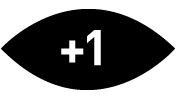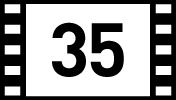

When most people think of the great decade of independent film, they think about the 1990s. But, in truth, that was just the decade in which indie cinema was corporatized. From my vantage point, the greatest era of indie filmmaking was the 1980s. That was the decade when indie cinema moved out of the drive-in, the grind-house, and the arthouse midnight movie and became mainstream. Pictures like Smithereens (the first American indie to play in competition at Cannes), My Dinner with Andre (which ended up on many critics' Best of the Decade lists), Out of the Blue, Eating Raoul, Chan Is Missing, Liquid Sky, Born in Flames, Variety, Koyaanisqatsi, Blood Simple, Smooth Talk, Salvador, She's Gotta Have It, Parting Glances, Near Dark, River's Edge, The Thin Blue Line, Drugstore Cowboy, Longtime Companion, Roger & Me, and sex, lies and videotape (which ushered in the change that would come in the 1990s. In 1984 alone, we got Bless Their Little Hearts, Choose Me, The Killing Floor, Paris Texas, Repo Man, Stop Making Sense, Streetwise, Suburbia, This Is Spinal Tap, The Times of Harvey Milk, Wildrose, Stranger Than Paradise, The Terminator, and this—the fourth film from director John Sayles.
Sayles was one of the greatest indie filmmakers of the '80s (and '90s, and Aughts!). He directed his first feature, Return of the Secaucus 7, in 1980 and never looked back. While he made an excellent living writing and script-doctoring for Hollywood, he always made his own movies outside the studio system. Sayles’ fourth film as a director is one of his most whimsical yet maintains a plaintive quality throughout. This tonal combination and the way he capitalizes on an obviously minimal budget make The Brother from Another Planet one of his best.
The film stars Joe Morton in the titular role of an extraterrestrial slave who escapes to Earth and tries to find a new life in New York City. Morton's alien passes for a typical African-American human apart from his feet (he's only got three big toes) and the fact that he has no speaking voice. Morton made his feature film debut in Joan Micklin Silver's wonderful Boston-set newspaper comedy Between the Lines in 1977, but this was the film that made him a star, even though he doesn't utter a single line of dialogue. He's been a major actor ever since, with perhaps his most famous role coming in Terminator 2: Judgment Day, in which he plays the inventor of the intelligent computer system that achieves sentience and launches a global war of extermination against humanity.
The micro-budgeted The Brother from Another Planet is about as opposite from T2 as one could imagine. The only special effects in Sayles's picture are achieved with flashlights. The movie has a wonderful cast of great New York actors, including Steve James, Tom Wright, Reggie Rock Bythewood, and Fisher Stevens, as well as the always-welcome Bill Cobbs and Leonard Jackson and familiar faces like Caroline Aaron and Dee Dee Bridgewater. Sayles's longtime producer and wife, Maggie Renzi, also has a small role. The funniest performances come from Sayles and David Strathairn playing the awkward yet imposing Men in Black, alien slave-catchers with superhuman strength but only a rudimentary understanding of Earth customs.
Composer Mason Daring's steel-drum-induced score—featuring several songs, some co-written with Sayles and one performed by Morton—contributes to the film's off-kilter feelings of familiarity and otherworldliness. The distinctive cinematography comes courtesy of the great Ernest Dickerson, who had just graduated from NYU film school. This would be the first feature made by Dickerson, who would go on to shoot all the movies of his NYU buddy Spike Lee—from Lee's student films and She’s Gotta Have It through Malcolm X—before becoming a director in his own right.
Working from a MacArthur Genius grant, Sayles, Dickerson, and producers Renzi and Peggy Rajski made The Brother from Another Planet for $350,000, shooting on Super 16mm mostly at night in Harlem, with a predominantly black crew. Dickerson had come up through music videos and was one of the few Black DPs working in features, as well as one of the only working cinematographers at the time who fully understood how to expose for African-Americans with dark pigmentation so that they looked great not only on the original camera negative but also when blown to 35mm, duped off of interpositives, transferred to VHS, etc. He not only knew how to light dark-skinned actors in low-light situations, but he also had a gift for beautifully capturing people and the city with slightly augmented natural light. Though The Brother from Another Planet takes place chiefly in poverty-stricken parts of New York during the end of the city's grungiest era, it is a gorgeous film to look at.
Joe Morton is a mute alien slave who escapes to Harlem, where he passes for a normal, if unusual, African-American human in John Sayles's whimsical yet plaintively humanist indie.








